Cheat Sheet: Council of Ministers | Indian Polity for UPSC CSE PDF Download
Introduction
This chapter explains the State Council of Ministers in India in simple words. The Council, led by the Chief Minister, is the real power behind a state’s government, similar to the central government. We’ll cover its constitutional rules, qualifications, roles, responsibilities, appointment, composition, and how it works.
Introduction
India’s states follow a parliamentary system, like the Centre. The Council of Ministers, headed by the Chief Minister, holds the real power to run the state, advising the Governor. The State Council of Ministers, led by the Chief Minister, is the key decision-making body, mirroring the Centre’s setup.
The State Council of Ministers, led by the Chief Minister, is the key decision-making body, mirroring the Centre’s setup.
Constitutional Provisions
The Constitution (Part VI, Articles 163–164, 166) sets rules for the State Council of Ministers, defining its role, size, and accountability.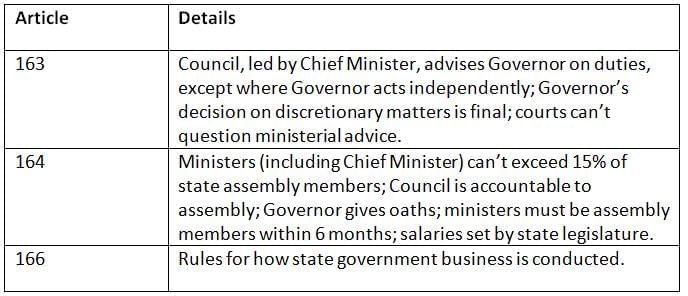 The Constitution ensures the Council advises the Governor, stays accountable to the assembly, and follows clear rules for operation.
The Constitution ensures the Council advises the Governor, stays accountable to the assembly, and follows clear rules for operation.
Qualifications for Ministers
To be a minister, a person must meet specific requirements, including being a state legislature member or becoming one soon.
Ministers need to be legislature members and meet age and citizenship rules to serve in the Council.
Role and Functions of State Council of Ministers
The Council makes policies, runs the state, makes key appointments, guides laws, manages money, and follows central orders.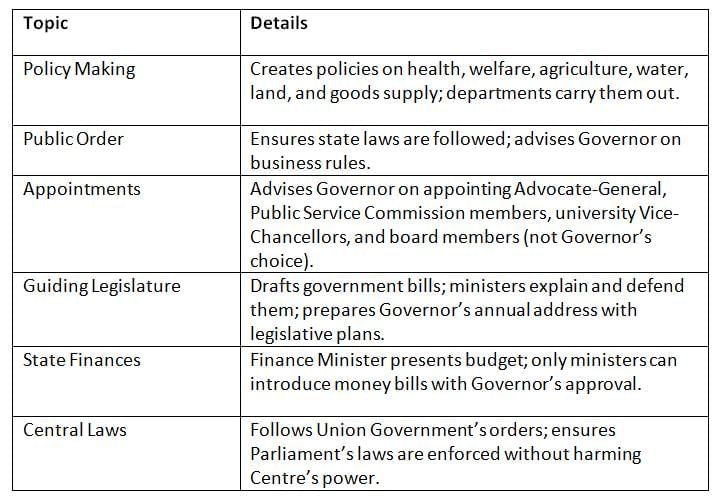
The Council shapes state policies, enforces laws, appoints officials, guides the legislature, controls money, and aligns with the Centre.
Types of Responsibility
Ministers have two kinds of responsibility: collective (as a team) and individual (personal).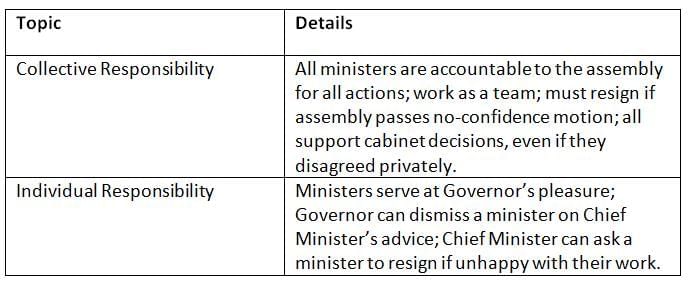 Ministers share team responsibility to the assembly and individual accountability to the Chief Minister via the Governor.
Ministers share team responsibility to the assembly and individual accountability to the Chief Minister via the Governor.
Appointment and Removal
The Governor appoints ministers on the Chief Minister’s advice, and they can be removed on the Chief Minister’s recommendation. The Chief Minister controls who joins or leaves the Council, with the Governor acting on their advice.
The Chief Minister controls who joins or leaves the Council, with the Governor acting on their advice.
Composition of State Council of Ministers
The Council has different ranks of ministers, with the Cabinet being the core decision-making group.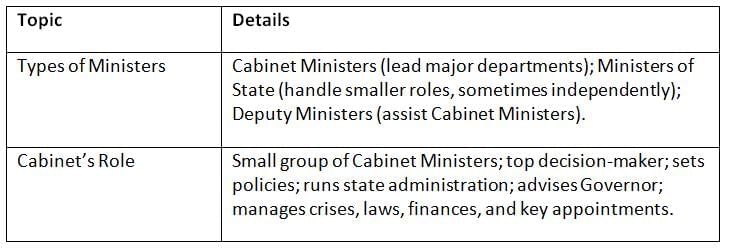
The Council includes various minister ranks, but the Cabinet is the main power hub for state governance.
Cabinet Committees
The Cabinet uses committees to handle specific tasks, making decisions faster and more organized.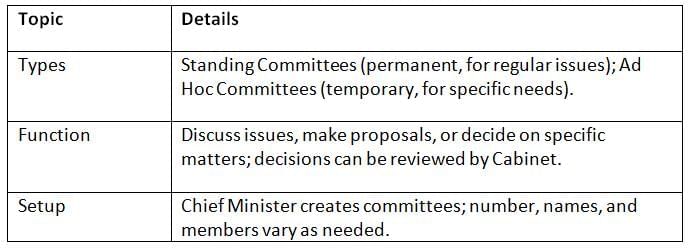 Cabinet Committees help the Council work efficiently by focusing on specific issues, with flexibility to adapt.
Cabinet Committees help the Council work efficiently by focusing on specific issues, with flexibility to adapt.
Conclusion
This chapter shows how the State Council of Ministers, led by the Chief Minister, is the backbone of state governance in India. It makes policies, runs the state, and stays accountable to the legislature, following constitutional rules. The Council’s work, from drafting laws to managing finances, drives state progress and improves lives. With the Cabinet and its committees, the Council ensures effective leadership, making it a key part of India’s democratic system.
|
154 videos|998 docs|260 tests
|
FAQs on Cheat Sheet: Council of Ministers - Indian Polity for UPSC CSE
| 1. What are the constitutional provisions related to the Council of Ministers in India? |  |
| 2. What qualifications are required for a person to become a minister in India? |  |
| 3. What are the main roles and functions of the State Council of Ministers? |  |
| 4. How is the State Council of Ministers appointed and removed? |  |
| 5. What are Cabinet Committees, and what is their significance within the Council of Ministers? |  |





















